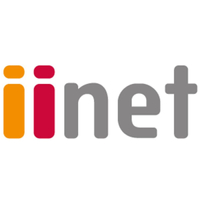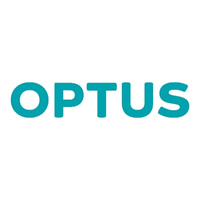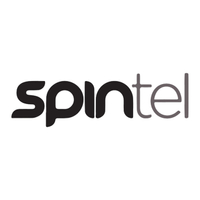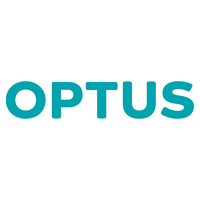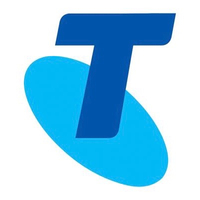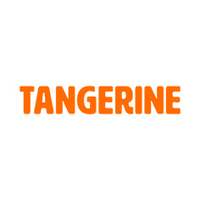Best NBN alternatives: The non-NBN plans to consider in Australia
Looking for an NBN replacement? These are the best alternatives across Australia

The best NBN alternatives are ones that offer a genuine advantage over the national network. You might want to consider an alternative if the NBN is simply unavailable at your home, or if the connection is unreliable or slow. The best NBN plans offer great speeds and competitive prices, and you should consider switching your NBN provider if you can get a service but are unsatisfied with the experience, though the location of your home and the fixed-line technology in place might push you in the direction of an non-NBN internet.
There are so many internet options that rival the NBN. Satellite-based services, connections over 4G and 5G networks and internet types operated by private companies are all options to you, however the NBN typically has the advantage when we look at the amount of homes serviced and top speeds. We’ve been keeping an eye on all of these and want to make the search easier for you.
We recommend that you start with the best 5G home internet and the best 4G home broadband plans. As far as NBN alternatives go, these internet types cover much more of the country than other options, while also offering consistent speeds and sensible costs. 5G is faster than 4G, though it isn't available as widely. Mobile broadband might also be a worthwhile option if you’re after an internet connection on the go.
If you live in a particularly remote part of Australia, you might want to consider a Starlink internet plan. Starlink utilises a network of low orbit satellites to deliver internet to your home, though you can also purchase an extra pack to activate roaming. Starlink is a worthwhile alternative to Skymuster (the NBN’s own satellite-powered internet for remote parts of Australia) if you want faster speeds, but it is quite expensive.
Finally, private networks like TPG's Vision Network, GigaComm and OptiComm are also worth considering if you still want a fixed-line internet solution – and in many cases, they might be in place instead of the NBN. These NBN alternatives are rolled out in similar ways, servicing some buildings in major cities with proprietary infrastructure.
So let’s get to it. These are the best NBN alternatives for you to consider in Australia.
5G home internet
5G home internet is, speaking broadly, probably the NBN alternative that most people would want to gravitate towards. This internet type offers competitive speeds against the fastest NBN plans at attractive prices. Plans with internet speeds of around 50Mbps are the baseline, though uncapped plans are available and theoretically deliver near gigabit speeds.
5G home internet works by utilising the networks operated by Telstra, Optus and Vodafone – the very same networks that 5G-capable smartphones access. Plans powered by 5G come with high speeds and because of the plug-and-play nature of 5G home broadband, it’s a seamless experience to get started. You don’t need a special port on the wall to plug your modem-router into (except for power), nor do you need to wait for a technician to come to your home and get you connected.
All of this said, 5G comes with a significant drawback in that it’s not available everywhere. The 4G network is much more widespread in Australia, so although you may be able to sign up for a 4G home internet plan, your home might be out of range for 5G internet.
5G home internet plans
Why you can trust TechRadar
Here are some of the best 5G home internet deals available right now. Scroll down for even more plans.
Best cheap 5G home internet plan
iiNet | 5G home internet | No lock-in contract | AU$49.99p/m (for 6 months, then AU$59.99p/m)
iiNet offers two competitively priced 5G home internet plans, with the entry-level option being our pick of the bunch when it comes to the cheapest on offer. iiNet’s 50Mbps maximum speed plan comes with a discounted price of AU$49.99 per month for the first six months, after which it switches to AU$59.99. There's no data cap, so don’t feel limited with Netflix streaming and gaming. A modem router will be provided to you, and if you cancel your plan, you’ll need to return it to iiNet within 30 days.
Total minimum cost: AU$49.99 (including modem) | Total cost for first year: AU$659.88 | Ongoing yearly cost: AU$719.88
Best premium 5G home internet plan
If you want to maximise 5G and its potential for high download speeds, this uncapped Optus home internet plan takes the cake.
Optus advertises typical evening speeds of 240Mbps, but since there is no cap on the potential maximum, you may find you achieve speeds far greater than this. Due to factors such as your distance from the 5G tower and the line of sight, this isn’t an absolute guarantee. If you find you do achieve the fast download speeds, it makes this plan competitively priced. Optus’ 5G network has been a consistent top performer in ACCC reports, so if you live in an area with good 5G internet coverage and few obstacles, this could be a top pick for your household.
Total minimum cost: AU$557 (including modem) | Total cost for first year: AU$1,128 | Yearly cost after discount: AU$1,188
4G home internet
4G home internet is likely the most accessible non-NBN internet type in Australia by virtue of just how widespread 4G networks are. This internet type is also one of the slowest mentioned in this article, with maximum speeds of up to 25Mbps. It’s an attractive internet solution if you live out of range of 5G and don’t have a reliable NBN connection at your home, but don’t want to pay the high costs for Starlink.
Like 5G home internet, 4G home broadband works by leveraging the Telstra, Optus and Vodafone 4G networks. Your 4G-capable modem-router will be set to connect to one of these networks, with setup being relatively easy. You don’t need to plug it into anything except for power.
You might want to avoid 4G home internet entirely if you crave fast internet speeds or if you want to stream in 4K definition. It’s also not a great internet solution for more than three users at once.
4G home internet plans
Here are some of the best 4G home internet plans available right now in Australia. Scroll down for even more deals.
Best value 4G home internet plan
Spintel | 4G home internet | Unlimited data | No lock-in contract | AU$53.95p/m
Spintel is our pick for the best value 4G home internet plan due it offering among the fastest download speeds and being one of the most affordable providers.
Spintel advertises 25Mbps typical evening download speeds, which ranks it as being one of the fastest providers of 4G home internet. You also only need to pay AU$53.95 per month, including a AU$4 per month modem-router rental fee.
Spintel also promises a 14 day free trial, wherein if you're not totally satisfied with the service, you can cancel without any hidden charges.
Total minimum cost: AU$69.95 (incl. modem postage) | Total first year cost: AU$663.40 (incl. postage) | Ongoing yearly cost: AU$647.40
Fastest 4G home internet plan
Optus | 4G home internet | No lock-in contract | AU$44p/m (first six months, then AU$59p/m)
Optus takes the crown for the fastest 4G home internet plan in Australia, at least going by its advertised typical evening speeds. Like Spintel, Optus quotes 25Mbps download speeds during the busier evening hours of 7pm to 11pm (Spintel uses the Optus 4G network). But it's the upload speeds that differ, Optus quoting 8Mbps compared to Spintel's 2Mbps.
In reality, a 5Mbps difference is likely going to go unnoticed, but if you're someone who uploads a lot of files to the cloud for example, it could prove to be invaluable.
Optus prices things slightly differently to other providers however. Not only is the regular monthly cost relatively high compared to others, but if you decide to cancel your service within 24 months of being connected, you'll be required to pay for the modem. Optus doesn't offer a 21-day return window to avoid any fee. If you remain connected for longer than 24 months, then you pay nothing for the modem.
Total minimum cost: AU$216 (incl. modem) | Total first year cost: AU$618
Mobile broadband
Similarly to 5G and 4G home broadband, mobile broadband utilises the networks operated by Telstra, Optus and Vodafone – but instead, mobile broadband can be used portably.
Mobile broadband is available across both 4G and 5G networks depending on the provider, with plans usually involving capped data. Users can access mobile broadband through either a provided SIM card, through a USB dongle or a portable modem-router. These can typically be bought outright from the internet provider or leased on a monthly basis. Speeds are similar to those on mobile phone plans and 5G/4G home broadband plans, though this depends on the location the mobile broadband is being used in.
Realistically, mobile broadband is like your phone plan without a phone number. It’s a good idea to pick up a mobile broadband plan if you’re the kind of person who is always on the move – such as if you live on the road or like to have internet access wherever you go.
But if you only need internet for a single person, you might want to have a look at the best phone plans as well. Getting a good phone plan that doubles as a high data internet plan could end up saving you some money.
Mobile broadband plans
Here's a quick snapshot of some mobile broadband plans available in Australia.
Best cheap mobile broadband plan
Telstra | Mobile broadband | 30GB data | No lock-in contract | AU$25p/m
Telstra’s middle range mobile broadband option will set you up with 30GB of data for AU$25 a month.This plan is actually capable of delivering both 4G and 5G speeds, so you’ll get whatever is the best available to you at the time. It can be bought as a SIM-only data plan, or paired with a modem if your portable device doesn’t have a SIM card slot. Note that if you do select one of Telstra’s modems, you’ll need to pay it off before cancelling the contract.
Total minimum cost: AU$25 (excluding modem) | Total cost for first year: AU$300
Best big-data mobile broadband plan
Tangerine | Mobile broadband | 100GB data | No lock-in contract | AU$34.90p/m
If you’re more data-hungry, consider this 5G-capable mobile broadband plan from Tangerine. It gives you 100GB a month to burn through for just AU$34.90 each billing (after an initial AU$5p/m discount for the first 6 months).
Belong uses parts of Telstra’s 5G and 4G networks, though it says download speeds are capped at 100Mbps for both – that still makes it as fast as some of the best NBN 100 plans. You can find Tangerine mobile broadband plans with 200GB and 400GB of data, and these cap speeds at 250Mbps, but you do need to pay a lot more each month.
If you don't already own a mobile broadband router, then Tangerine is happy to sell you one for the rather steep cost of AU$499.
Total minimum cost: AU$34.90 | Total cost for first year: AU$418.80
Starlink
Starlink arrived for use in Australia back in 2021 and since then it has become a great internet solution if you want fast internet without the NBN – particularly if you live in central Australia and your only other option is NBN’s own Sky Muster satellite network.
Starlink works through Low Earth Orbit (LEO) satellites, involving hundreds of small satellites orbiting the Earth that mesh together and create a global internet network. The result is high bandwidth broadband across the planet, albeit with higher latency by virtue of the satellite-based technology.
What may turn you off Starlink are the costs. Users need to pay for the equipment that they use to access the Starlink network and then need to pay relatively high monthly costs (compared to the NBN).
According to a September 2023 report from Ookla, Australian download speeds on Starlink achieved a median of 104.92Mbps, with an upload speed media of 11.33Mbps. Latency is the most disappointing part of Starlink, with 59.78ms of latency observed in the company’s report. That high latency would be a nightmare for multiplayer games who want the best experience against other players.
Starlink internet plans and equipment
Every Starlink plan requires the purchase of equipment, which costs RRP AU$549 plus shipping. The standard Starlink internet plan costs AU$139/pm. In areas where there is high demand, such as Greater Sydney and Greater Melbourne (per Whistleout), Starlink also charges a one-off AU$145 congestion fee.
Roaming plans start at AU$80 per month for a data capped plan of 80GB or AU$174/pm with uncapped data.
Starlink plans intended for boats start at AU$374/pm for mobile priority and 50GB of capped data, then go up to AU$1,486p/m for 1TB capped data and AU$7,433/pm for 5TB. Capped data.
Starlink equipment can be purchased from Starlink directly or from Australian retailers:
- JB Hi-Fi: Starlink Standard Kit (AU$549)
- Starlink: Starlink Standard Kit (AU$549)
- Starlink: Starlink refurbished Standard Kit (AU$199)
There are different satellite dish types available. These other dishes are much more expensive and are intended for mobile businesses and serious travellers.
The Starlink Mini dish includes the modem-router and dish as one combined gadget:
- JB Hi-Fi: Starlink Mini (AU$799)
- Starlink: Starlink Mini (AU$799)
The Starlink Performance Actuated Kit is more intended for boats, caravaning and mobile businesses, hence the extreme cost of equipment:
- JB Hi-Fi: Starlink Performance Actuated Kit (AU$1,699)
- Starlink: Starlink Performance Actuated Kit (AU$1,699)
Telstra also offers Starlink plans through its satellite internet offering, with max speeds of 50/10Mbps for $125 per month (plus the cost of equipment).
Private fibre networks
The NBN isn’t the only fibre network in Australia. GigaComm, OptiComm and the Vision Network are other fibre networks that are available across Australia in select suburbs and buildings.
To access these private fibre networks, homes and apartment buildings require proprietary infrastructure to be in place. This is the big reason why this isn’t a particularly common NBN alternative; that specialist infrastructure requires a lot of work to be put in place and is often installed instead of the NBN in new developments. This is a significant drawback in terms of user choice as the NBN network has far more plans and providers available than any one of these private networks.
Vision Network (formerly known as TPG’s FTTB)
- Available in: Sydney, Melbourne, Brisbane, Perth, Adelaide and the Gold Coast
- Plan speeds: From 50/15Mbps to 500/25Mbps
- Price: from AU$35p/m up to AU$89.99p/m
TPG may offer NBN plans across several Australian providers (including iiNet and Vodafone), but it also has its own fibre network called the Vision Network – renamed from TPG’s FTTB.
The Vision Network is currently exclusively available to select apartment buildings and complexes, clustered in metropolitan areas in major cities.
Four plans are available on the Vision Network, each provided through TPG and subbrand iiNet, with no contract and six month options available.
Opticomm
- Available in: All states and territories, excluding Tasmania
- Plan speeds: from 50/20Mbps up to 1000/50Mbps (plan speeds set by service providers)
- Price: from AU$54p/m up to AU$129p/m (prices set by service providers)
Opticomm is a privately owned fibre network, and it can be found in place of fixed-line NBN in certain areas. This means if you live in a new housing development or apartment complex (where Opticomm tends to be found) it might be the only form of fibre internet available to you, and you could be stuck with it.
While Opticomm supplies, installs and maintains its own network, it does not sell directly to consumers. Instead, Opticomm is a wholesale provider, and it has partnered with over 50 internet providers which resell you access. In this way, it’s similar to the NBN.
Opticomm says that in most cases, those wanting a plan can choose any internet provider on its list – though note that some providers only sell residential plans, and others only offer business plans.
Some popular providers which resell access to the Opticomm network include Aussie Broadband, Exetel, iiNet and Telstra. Because Opticomm doesn’t sell directly to consumers, it’s the internet providers who set the speeds and costs of the Opticomm plans which they then resell onto you.
The Opticomm network is available in most major capital cities and regional areas, excluding Tasmania, and often serves new housing estates. You’ll find that the telcos reselling access to Opticomm’s network group together plan speeds in an almost identical way to the NBN, so you’ll find plans offering 25Mbps, 50Mbps, 100Mbps and so on.
GigaComm
- Available in: central Melbourne and central Sydney
- Plan speeds: from 100/25Mbps up to 1000/100Mbps
- Price: from AU$65p/m up to AU$99p/m
GigaComm is one of the more interesting NBN alternatives because it’s more broadly available than most other 'private' networks; if you live within the supported Sydney and Melbourne coverage area, you should theoretically be able to sign up for the service. GigaComm owns and operates its own network infrastructure (which is a mix of wired and wireless tech), and you sign up directly with GigaComm and contact its customer support team for any issues.
GigaComm is most-widely available in apartment buildings – including both older and newer developments – and it has a much smaller footprint in houses, with homes accounting for around 5% of its customer base. For apartment buildings, GigaComm uses a combination of fibre and fixed wireless mmWave technologies to connect the buildings to its network, and then uses existing copper and G.fast technology to deliver gigabit speeds over copper to the apartments.
Plans are broadly faster than most on the NBN, with three plans available through GigaComm directly:
- 100/25Mbps: AU$65/pm + AU$125 installation cost (upload speeds can be doubled for AU$10p/m)
- 200Mbps/50Mbps: AU$79/pm + AU$125 installation cost (upload speeds can be doubled for AU$10p/m)
- 1000/50Mbps: AU$99/pm + AU$125 installation costs (upload speeds can be doubled for AU$10p/m)
The installation cost is waived if you sign up for the 12 or 24-month contract.
Get daily insight, inspiration and deals in your inbox
Sign up for breaking news, reviews, opinion, top tech deals, and more.

Zac has been in the tech writing game for six years, having previously written for Gizmodo Australia, Canstar Blue, and The Daily Mail Australia (with articles on Nine, Junkee, Kotaku Australia and Lifehacker Australia). He’s a huge nerd with a deep passion for technology. While his main focus at TechRadar Australia is phones, monitors and peripherals, he also has a deep interest in the growing Australian EV landscape. Outside of Techradar, Zac’s a Headspace (a youth mental health organization) volunteer and an avid gamer.
